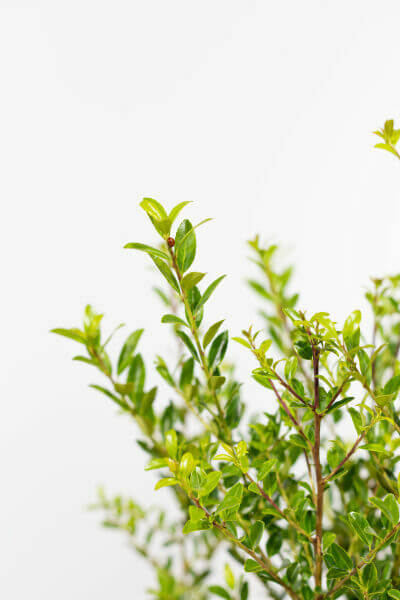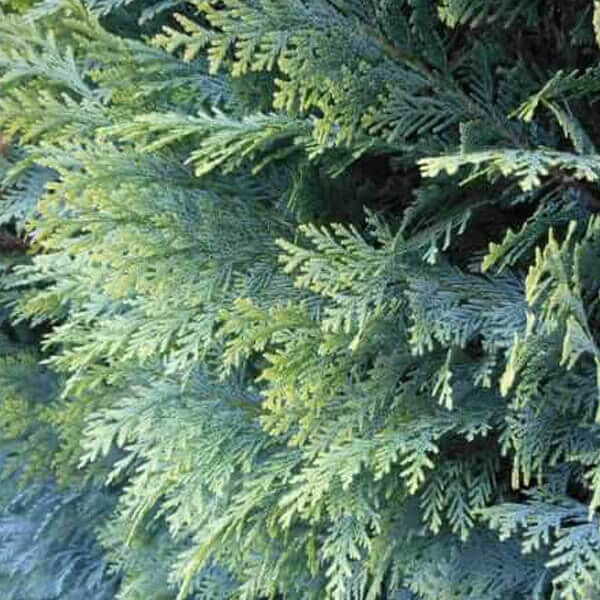Hedge Plants For Garden Edges
Hedge Plants For Garden Edges
Blog Article
Best Hedging Plants For Garden Rooms
Improve your garden's appeal with lush hedge ranges such as Yew (Taxus), Thuja, Laurel, Photinia, and Bamboo, celebrated for their structural stability and environmental benefits.
Yew and Thuja supply evergreen coverage and winter season strength, while Laurel offers rapid growth and broad, aromatic leaves.
Photinia adds seasonal appeal with its lively red foliage, and Bamboo lends a low-maintenance, peaceful atmosphere.
These hedges improve air quality, decrease sound, and produce tranquil, personal spaces.
Appropriate planting, spacing, and upkeep make sure vigorous growth and eco-friendly consistency.
Explore how these lush varieties can elevate your garden's appeal and wellness.
Key Takeaways
Transform Your Garden With Lush Hedge Varieties
- Select Yew for its thick, evergreen development and unrivaled longevity.
- Go with Laurel for its quick development and broad leaves, making sure quick privacy.
- Choose Photinia for its dynamic seasonal foliage, which turns a striking dark red.
- Use Bamboo for a low-maintenance, winter-hardy hedge with visual appeal.
- Area plants 2-3 per meter and prune frequently for optimum development and health.
Popular Hedge Plants
When transforming a garden with lush hedge varieties, it's vital to think about popular hedge plants such as Yew, Thuja, Laurel, and Photinia due to their distinct attributes and advantages.
Yew (Taxus) is extremely respected for its durability and dense, green growth, making it a prime choice for withstanding landscapes.
Thuja is noted for its evergreen foliage and robust winter durability.
Photinia includes seasonal vibrancy with red leaves that darken over time, creating vibrant visual appeal.
Laurel uses quick development and aromatic, broad leaves, suitable for quick privacy.
Additionally, Bamboo is an excellent choice for atmosphere, using a low-maintenance, winter-hardy choice that improves the garden's aesthetic with its elegant, swaying walking canes.
These choices accommodate a variety of horticultural requirements and choices.
Advantages of Garden Hedges
Garden hedges offer a multitude of advantages, making them an important addition to any landscape. These natural barriers are affordable to implement and supply considerable wind protection, boosting air flow and contributing to sound decrease. The thick foliage of hedges like Thuja and Beech guarantees privacy by obstructing exposure, developing a peaceful and remote environment.
Hedges also play a crucial function in microclimate guideline, offering a steady environment that promotes plant growth and lessens temperature variations. Their complex leaf structures filter contaminants, enhancing air quality and contributing to a much healthier garden community.
Moreover, hedges master noise decrease, soaking up and deflecting sound waves to lower ambient sound levels. This dual performance of supplying both visual and acoustic personal privacy enhances the total tranquility and aesthetic appeal of any garden.
Planting and Upkeep Tips
For an effective hedge, careful preparation of the planting area is crucial. Make sure the soil has appropriate pH and drain to support strong root development.
Space the plants appropriately for the picked species. Water the hedge regularly throughout its preliminary development stage, changing as needed with seasonal changes.
Execute a methodical insect control and illness avoidance technique, utilizing natural or chemical treatments when needed. Routinely check for aphids, termites, and fungal infections.
Apply mulch to maintain wetness and suppress weeds. Seasonal pruning promotes dense growth and air circulation, essential for plant health.
Following these guidelines will assist you cultivate a vibrant, well-maintained hedge that enhances the appeal of your garden.
Spacing and Cutting Standards
Spacing and Trimming Guidelines
Proper spacing and cutting are important for cultivating healthy, aesthetically appealing hedges. Sufficient spacing ensures each plant gets enough nutrients, light, and airflow.
Follow these guidelines for optimum hedge upkeep:
- Spacing: Position hedge plants 2-3 plants per meter to encourage robust development.
- Pruning Strategies: Regular pruning is essential for keeping preferred hedge height and shape. Trim brand-new growth in summer season and cut back older wood during winter season.
- Seasonal Care: Adjust cutting approaches and schedules according to seasonal requirements to guarantee plant health.
- Hedge Height: Regularly display and trim to keep the preferred hedge height and attain uniform visual appeals.
Sticking to these actions will ensure your hedge grows, improving both the appeal and performance of your garden.
Choosing the Right Hedge
Selecting the Right Hedge
Picking the appropriate hedge involves evaluating elements such as fully grown height, foliage density, and environmental resilience. Effective hedge plant selection requires comprehending each species' growth attributes and site-specific versatility.
For instance, Yew (Taxus) provides excellent durability and dense development, while Thuja is noteworthy for its winter season durability. Additionally, thinking about maintenance requirements is important; fast-growing species like Laurel or Privet need regular trimming, whereas low-maintenance choices like Bamboo or Ivy might be more suitable for those seeking very little maintenance.
Environmental aspects such as soil type, light accessibility, and wetness conditions should likewise guide the choice procedure. This careful method ensures the selected hedges will thrive, offering both visual and functional benefits to the garden landscape.
Delivery and Planting Suggestions
To ensure your hedge plants prosper, they need to be delivered by specialized couriers and planted without delay upon arrival.
Follow these essential steps for effective planting:
- Soil Preparation: Improve the soil with organic matter to improve drain and nutrient material.
- Planting Depth: Create a trench twice the width and equal to the depth of the root ball.
- Watering Techniques: Water completely after planting, keeping the soil regularly moist but not filled.
- Mulching: Use a layer of mulch to maintain moisture and suppress weeds.
Client Support and Service
Provided the vital function of timely assistance in horticultural pursuits, our customer support team is offered six days a week through telephone, email, and social networks to provide skilled suggestions and promptly address any concerns. Their commitment to quick reaction times guarantees client complete satisfaction by fixing inquiries associated with plant health, ideal planting techniques, and maintenance schedules.

Communication Approach
-----------------
This comprehensive support group, strengthened by an excellent 9.3/ 10 consumer rating, highlights our commitment to enhancing the gardening experience for every client.
Often Asked Questions
For How Long Does It Take for Hedge Plants to Establish?
Hedge plants normally need one to 3 years to end up being totally developed, with the specific period differing by types and growing conditions.
Efficient care throughout this vital period is important for robust growth. Consistent watering, vigilant weed control, and appropriate fertilizer application are pivotal in promoting strong root advancement.
For instance, fast-growing types like Laurel may establish faster, while slower-growing ranges such as Yew may take longer. Thorough upkeep speeds up the facility process, resulting in dense and healthy hedges.
What Are the Finest Hedge Plants for Personal Privacy?
The question of the best hedge plants for personal privacy involves assessing evergreen and deciduous options.
Evergreen hedges like Thuja, Laurel, and Cypress provide year-round protection, guaranteeing continuous privacy.
On the other hand, deciduous hedges such as Beech use seasonal personal privacy, shedding leaves in chillier months.
Key upkeep pointers for privacy hedges include routine trimming, fertilizing in spring, and proper spacing-- typically 2 to 3 plants per meter.
In addition, consistent watering and diligent weed elimination are essential for promoting healthy, thick growth.
Can Hedge Plants Attract Wildlife to My Garden?
Yes, hedge plants can bring in wildlife to your garden by providing necessary benefits like shelter, food, and nesting sites, consequently enhancing regional biodiversity. For example, yew, holly, and laurel are exceptional for drawing in birds, while ivy supports a variety of bugs.
Nevertheless, it is necessary to note that there are some drawbacks, such as increased upkeep to handle insects and routine upkeep. Carefully picking and keeping hedge varieties can assist balance these disadvantages and advantages, ultimately promoting a lively and sustainable community in your garden.
Exist Any Flowering Hedge Plants Available?
Yes, there are flowering hedge plants offered that can boost the beauty of your garden.
For instance, Elaeagnus, also called Olive Willow, produces aromatic white flowers in the fall, adding a touch of beauty.
Photinia, another popular option, showcases lively red leaves that mature into an abundant green, creating a dynamic visual result throughout the seasons.
To make sure these plants thrive, it's important to practice appropriate pruning strategies and seasonal upkeep, such as trimming new growth in the summertime and cutting down in the winter season.
These procedures will assist keep the health and visual appeal of your blooming hedges.
How Do I Avoid Pests in My Hedge Plants?
To avoid bugs in hedge plants, use natural pest control methods and maintain proper hedge care. Introduce advantageous bugs like ladybugs, which take advantage of hazardous insects, to produce a balanced environment.
Frequently check your hedges for indications of problem and without delay remove any affected parts to prevent the spread. Ensure the health of your hedges by applying balanced fertilizers and supplying appropriate water.
Use mulching to keep soil wetness and correct spacing to minimize plant stress and promote robust growth. These practices collectively assist in minimizing pest concerns and preserving a healthy hedge.
Conclusion
In essence, selecting the right hedge ranges such as Yew, Thuja, and Laurel can change any garden into a serene sanctuary. These plants provide year-round plant, boost visual appeal, and offer practical advantages like sound decrease and wind security.
Proper planting strategies, precise spacing, consistent watering, and seasonal cutting are important for optimal development.
Trustworthy delivery services and professional customer assistance make sure a seamless experience from purchase to planting, making it easier than ever to raise your outdoor area.
Garden hedges offer a plethora of benefits, making them an important addition to any landscape. These natural barriers are economical Article source to implement and supply significant wind defense, enhancing air blood circulation and contributing to noise decrease. The dense foliage of hedges like Thuja and Beech makes sure privacy by blocking visibility, producing a tranquil and secluded environment.

Pruning Strategies: Regular pruning is important for maintaining wanted hedge height and shape. Trim new development in summertime and cut back older wood throughout winter season.
Report this page